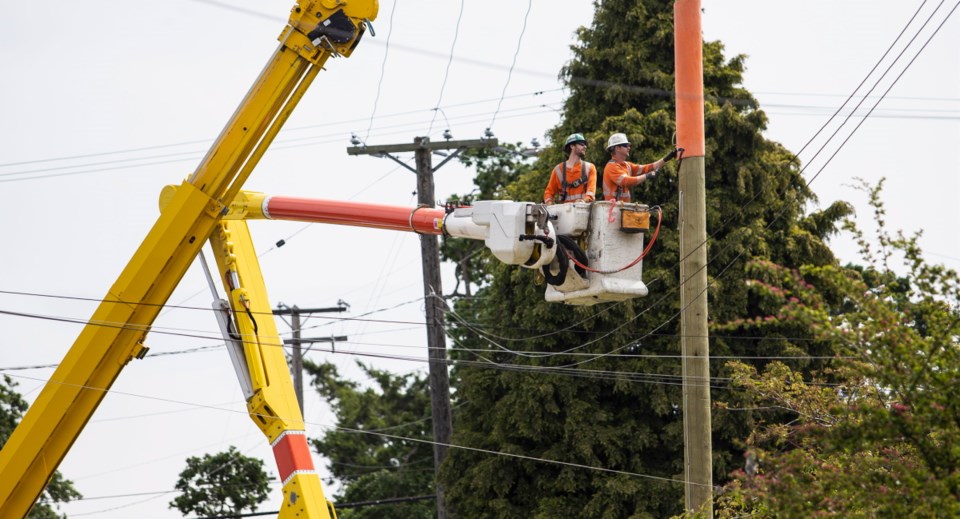This year is finally the end of the line for an 81-year-old wooden B.C. Hydro pole that has stood at Jordan River since William Lyon Mackenzie King was Canada’s prime minister and “Duff” Pattullo was B.C.’s premier.
It is one of B.C. Hydro’s oldest poles.
The Jordan River pole is among 8,400 wooden power poles — a typical number — being replaced in B.C. this year through its annual maintenance program. A total of 704 poles are being replaced in the capital region.
B.C. Hydro has 900,000 wooden power poles provincewide. They are inspected regularly.
The only wood the Crown corporation uses these days is sturdy Western red cedar.
When poles are taken down, crews will contact customers in person, by telephone or by mail to let them know when power will have to be turned off to allow for replacement.
B.C. Hydro’s 50- and 100-foot-tall poles are tough but they can be damaged in a number of ways including fire, poor weather, rain, fungi, wood-boring insects and other creatures.
“One big problem actually is woodpeckers. They peck a lot of holes. They are very fond of our Hydro poles, and also carpenter ants as well,” said Susie Rieder, B.C. Hydro spokesperson. Other pests such as termites and powderpost beetles can also erode poles.
Woodpeckers are attracted to poles not only to find bugs to eat but for making noise to win a mate, B.C. Hydro said in an information document.
Poles are bought pre-treated. New poles are sterilized to eliminate wood-decaying fungi or insects that might have been present. After several years in place, remedial treatment is used to extend the life of a pole.
Depending on climate, location and type of wood, poles in B.C. last 35 to 70 years if wood preservatives are used, but only 15 to 25 years without it.
Wood is used for poles because it is strong, climbable, widely available, renewable and economical.
It costs between $2,500 and $5,000 to replace a pole, Rieder said. That cost includes materials, labour and traffic services. “It’s going to vary depending on how complex the installation is.”
Some poles are linked to multiple transformers and underground connections.
B.C. Hydro’s poles hold more than 58,000 kilometres of overhead distribution lines and 278,000 overhead transformers around the province.
There are about 130 million poles in place in North America, according to the website of the North American Wood Pole Council.
In a typical stand of timber, just seven per cent of trees have the necessary qualities to serve as a utility pole.
The telegraph led to the first documented use of wood poles in 1844, the Wood Pole Council says.
“Samuel Morse received a $30,000 grant from the U.S. Congress to construct a 40-mile telegraph line between Baltimore and Washington D.C.
“Morse originally tried to put his new telegraph lines underground, but in the first few miles the lines failed. So he turned to placing the lines overhead and advertised to buy 700 ‘straight and sound’ wood poles.”
Success with the telegraph resulted in poles being used to hold wires to distribute electricity, the council says.



